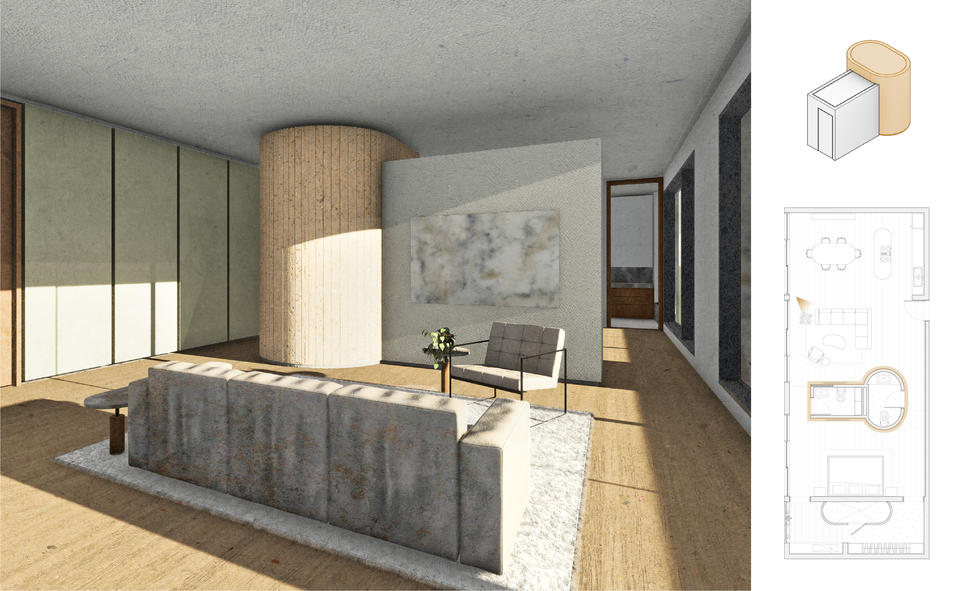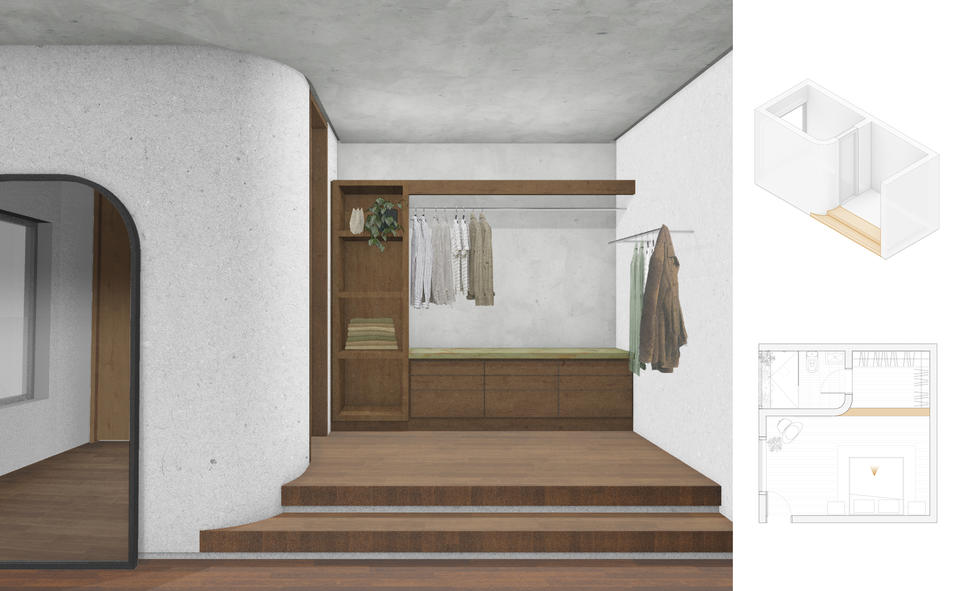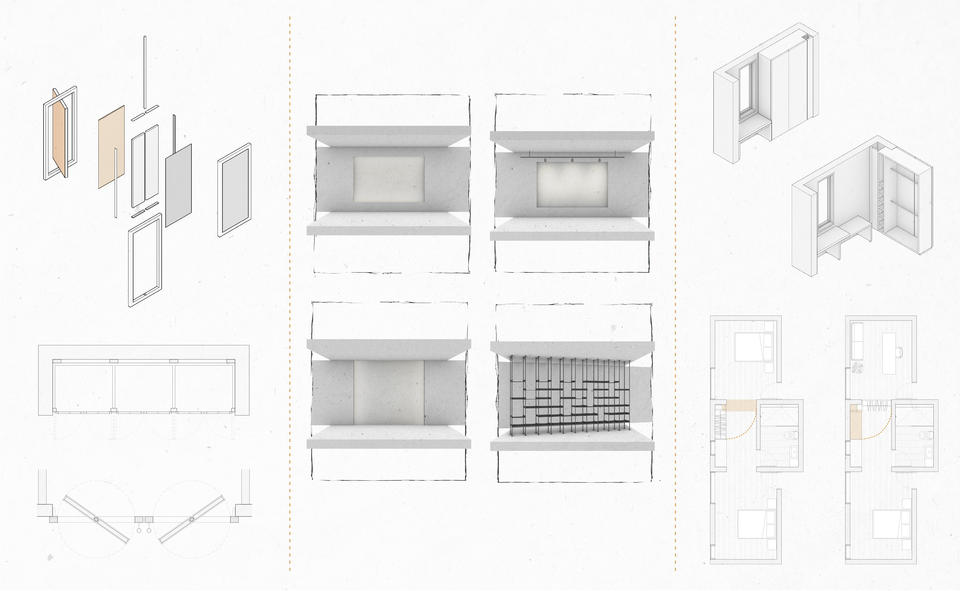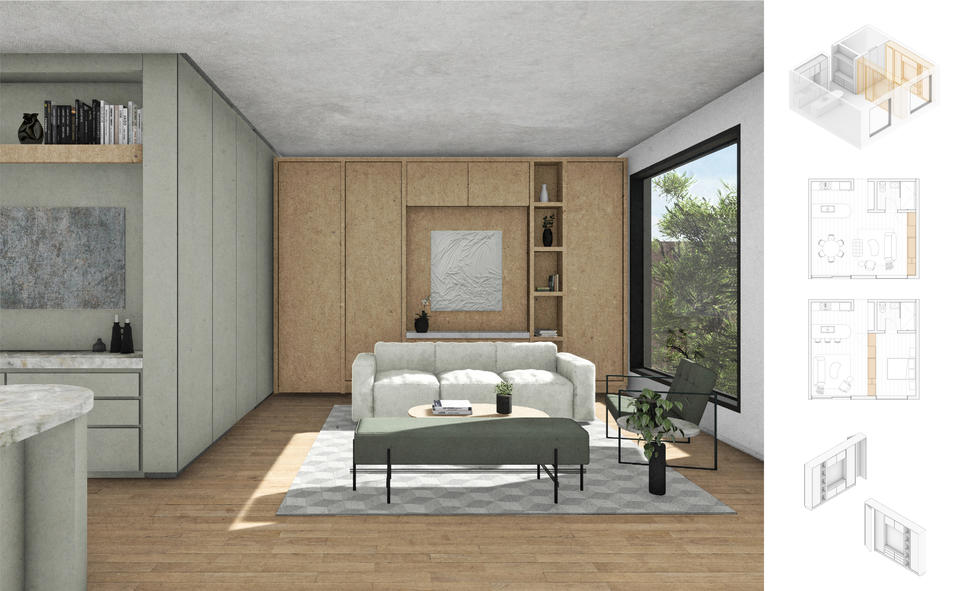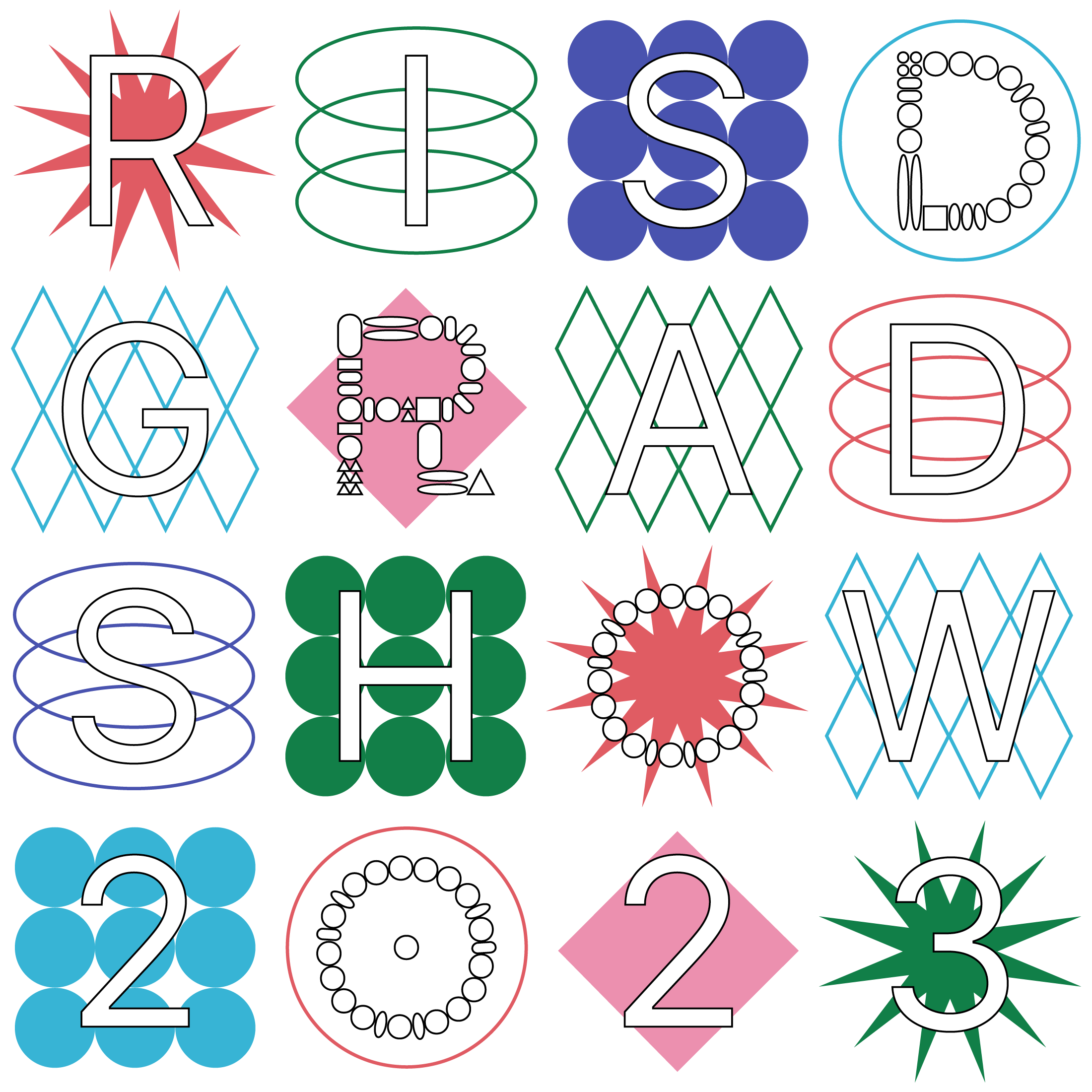Image
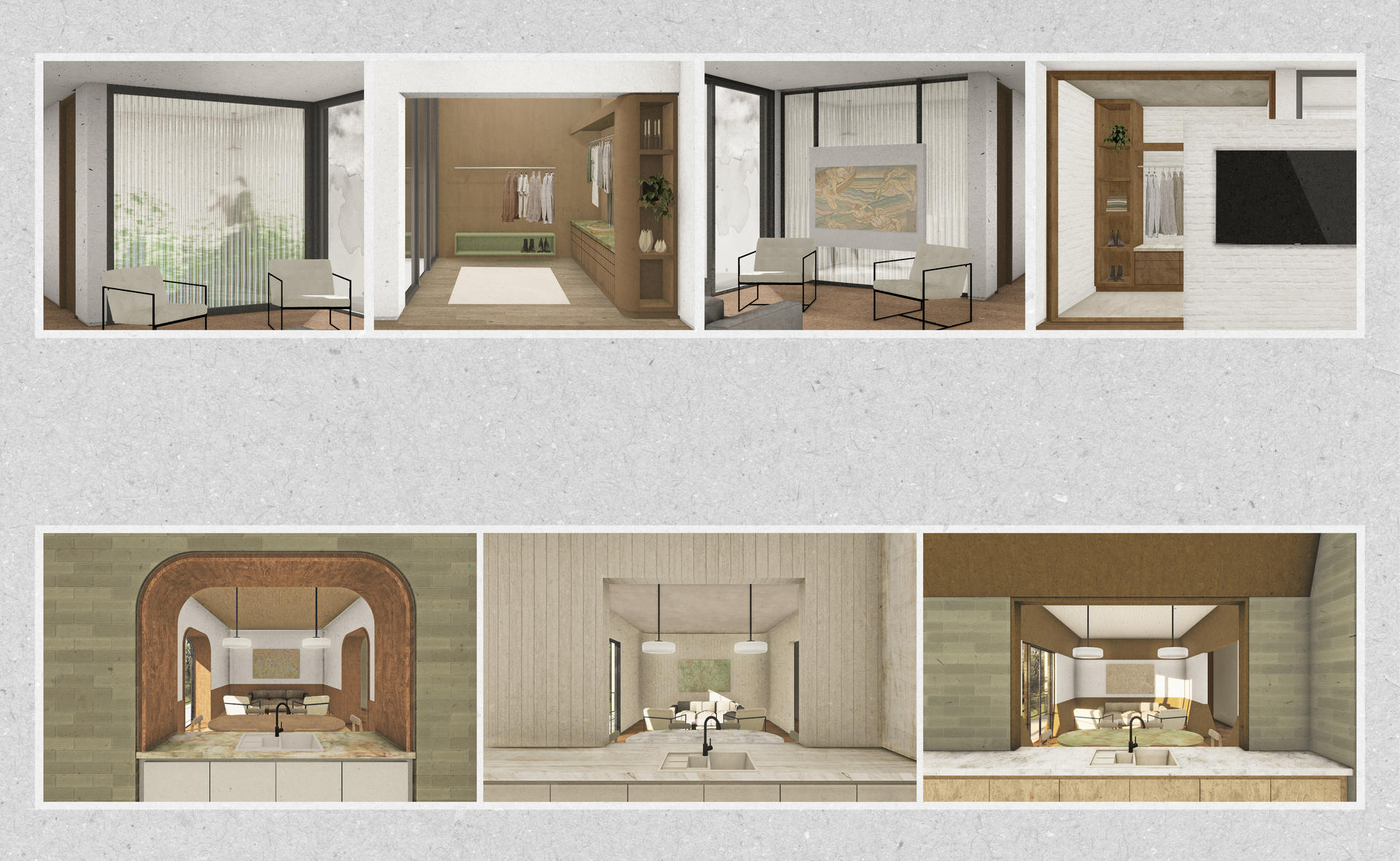
Natalia Silva
Overlooked
Modi Vivendi
Traditional gender roles, performance of heterosexuality, marriage, parenthood, and a large variety of other societal expectations manifest themselves in the domestic realm. Historically, residential design has catered towards heteronormative living stereotypes, marginalizing people whose way of living challenges the norm. Nowadays, designers with non-user clients (i.e. developers, investors, real estate firms, etc.) will often overlook non-heteronormative domesticities.
Although current residential design strategies still allow for a diversity of occupants, society would greatly benefit from architecture that intentionally caters to non-heteronormative modi vivendi (ways of living). Through a catalog of design strategies inspired by queer domesticities, this thesis expands the field’s current spectrum of design strategies and encourages designers to purposefully provide for a more diverse user group. By acknowledging overlooked domesticities, residential design can respond to a wider audience regarding the basic need for homemaking, an essential part of defining selfhood and transforming residences into safe spaces where one can exist fully and freely.
Image
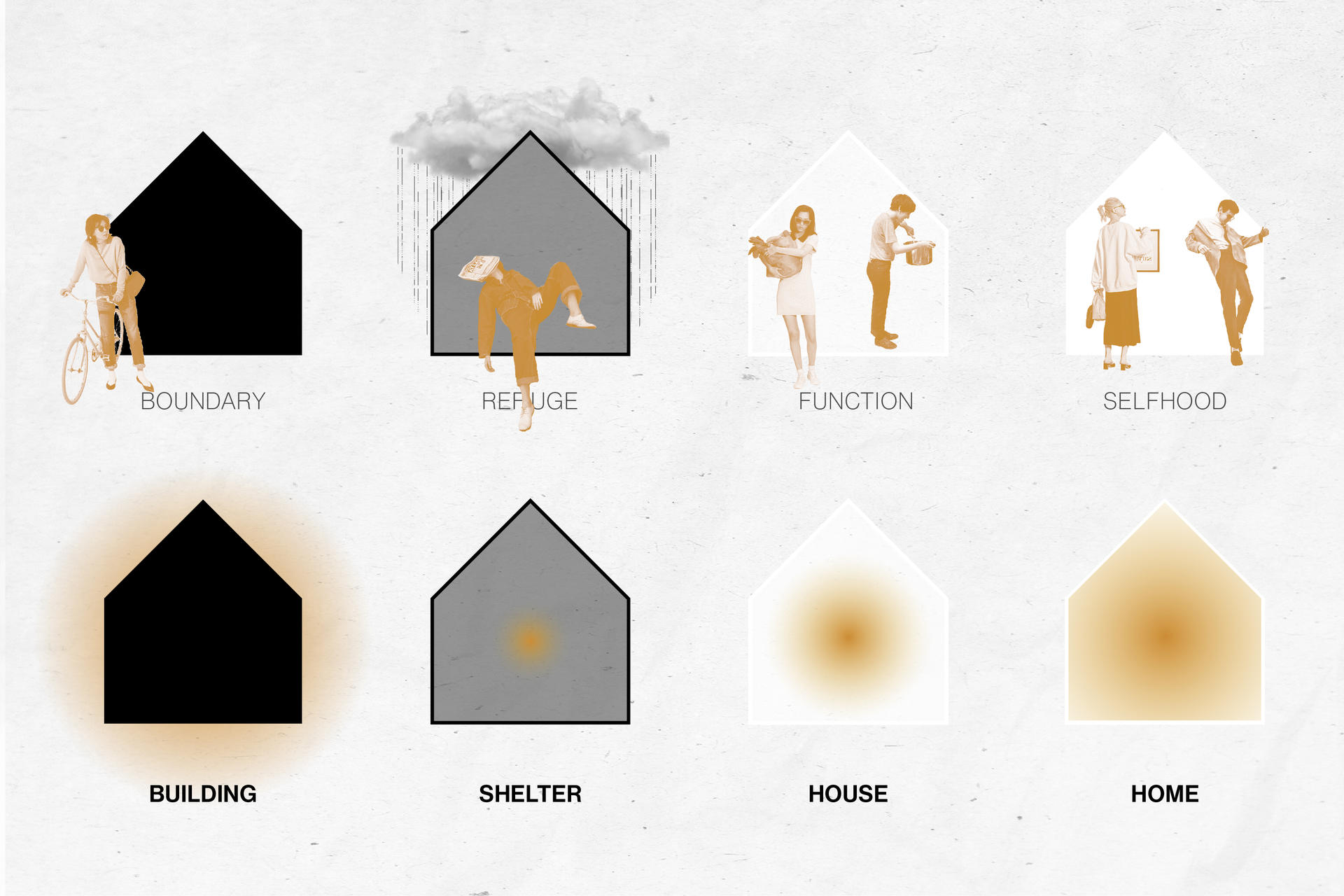
Homemaking
Conceptual Focus #1
Project definition: the creation of a home, specifically its transition from house to home, understanding home as a pleasant and fulfilling place to live and be fully yourself, a safe space.
Throughout history, western cultures have addressed home as not simply a place where one finds shelter, but the place where one exists. The word home carries a different meaning to our society than “house” or “apartment.” The stereotypical western notion of home evokes warmth and comfort. It interprets the feeling of being home as a sensation of freedom and satiety, hence the phrase ‘make yourself at home.’ Psycho-social studies have defined the home as an expression and extension of the self. Homemaking is an inherent need; some anthropological theories go as far as to say that it is even a part of defining selfhood. As Ray Lucas explains in Anthropology for Architects: “The home is…a special category of space, carrying with it an aspect of our identity, related as it is to the most intimate details of our everyday life.”
Image
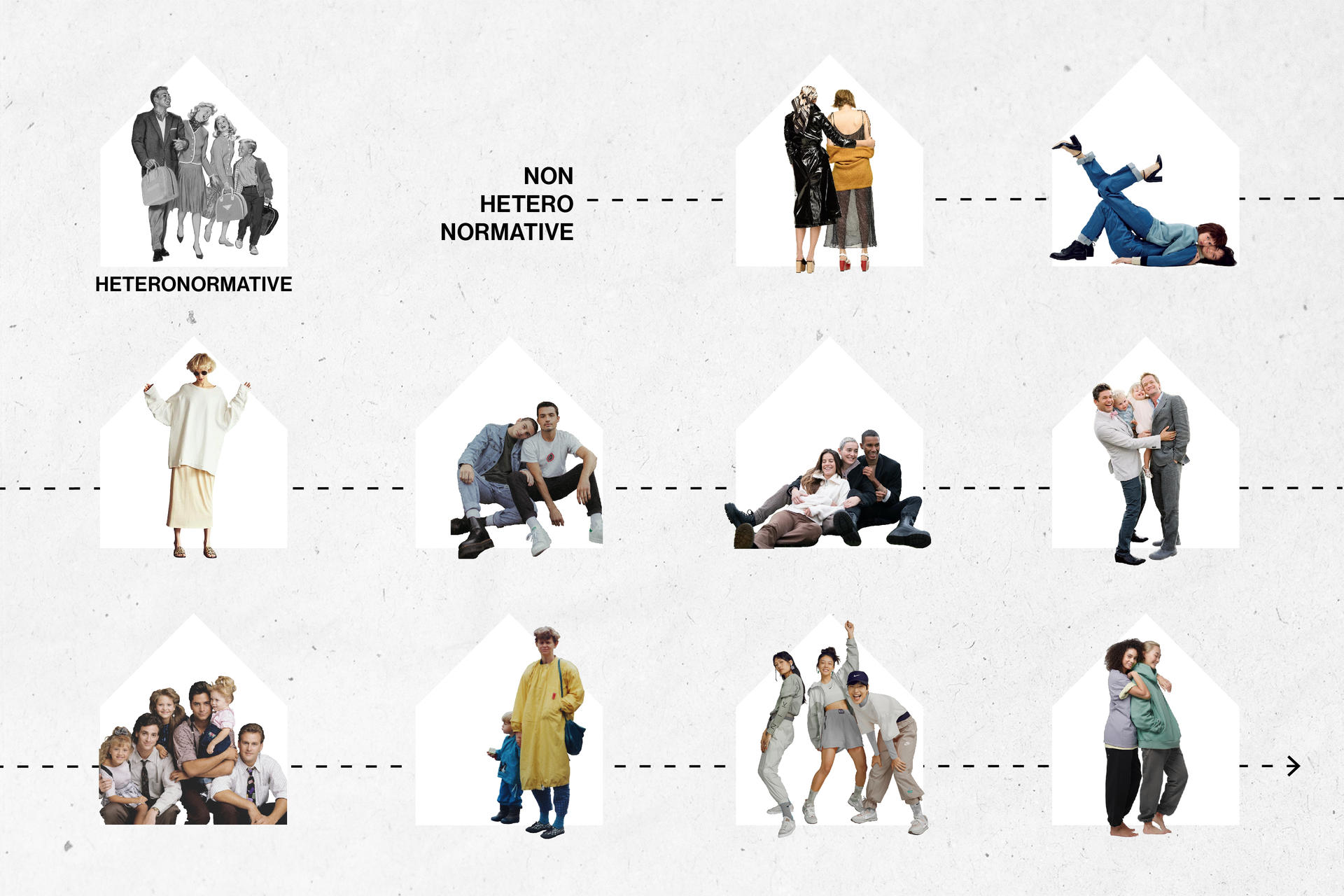
Non-Heteronormative Domesticity
Conceptual Focus #2
Project definition: being domestic or engaging in domestic activities outside of the heteronormative living arrangement (marriage as a procreative unit composed of two people of distinct and opposite genders).
Heteronormativity — relating to behavior or attitudes consistent with traditional gender roles and the assumption of heterosexuality as the norm — has led to a history of social and patriarchal oppression, marginalization, and ostracism to those who challenge it. Similarly, designing intuitively, and exclusively, from the heteronormative perspective has led other relevant, equally important ways of living to be overlooked. This thesis recognizes the historic oppression and current negligence towards non-heteronormative domesticities. It embraces their habits and desires, and deems necessary to directly address their modus vivendi and operandi in order to expand the residential design field towards their needs.
Image
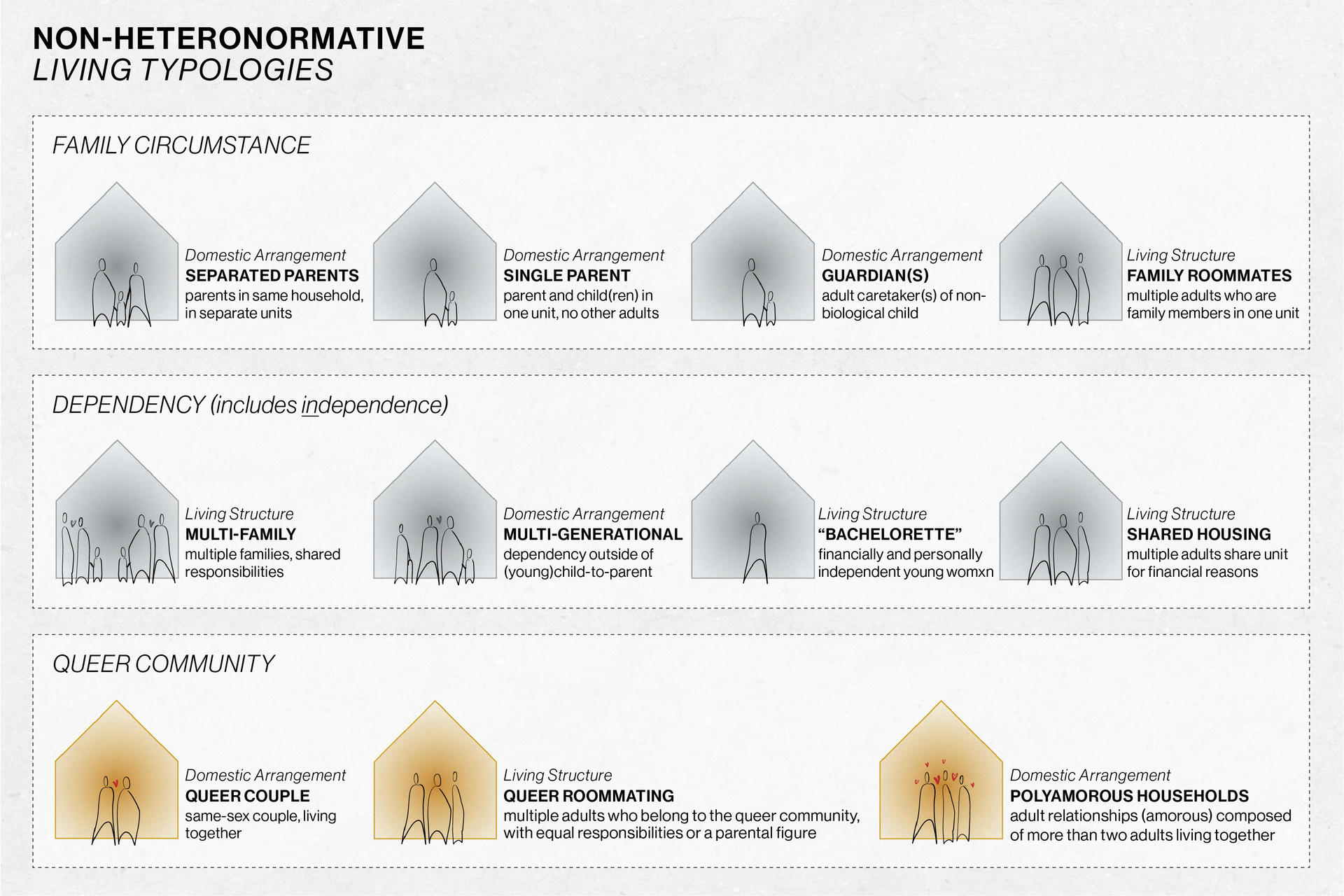
User Identification
Potential users and representatives
The thesis is exploratory, understanding the infinite ways in which one could cater to non-heteronormative living. It also takes an ethnographic approach, recognizing the importance of involving its non-heteronormative users. Non-heteronormativity is represented in a variety of domestic typologies. Most fall under three sub-categories: queer community, dependency, and family circumstance. Because of the strong link between homemaking and selfhood, and the importance of “safe spaces” to minority groups, the focus for this thesis is on the queer community.
Image
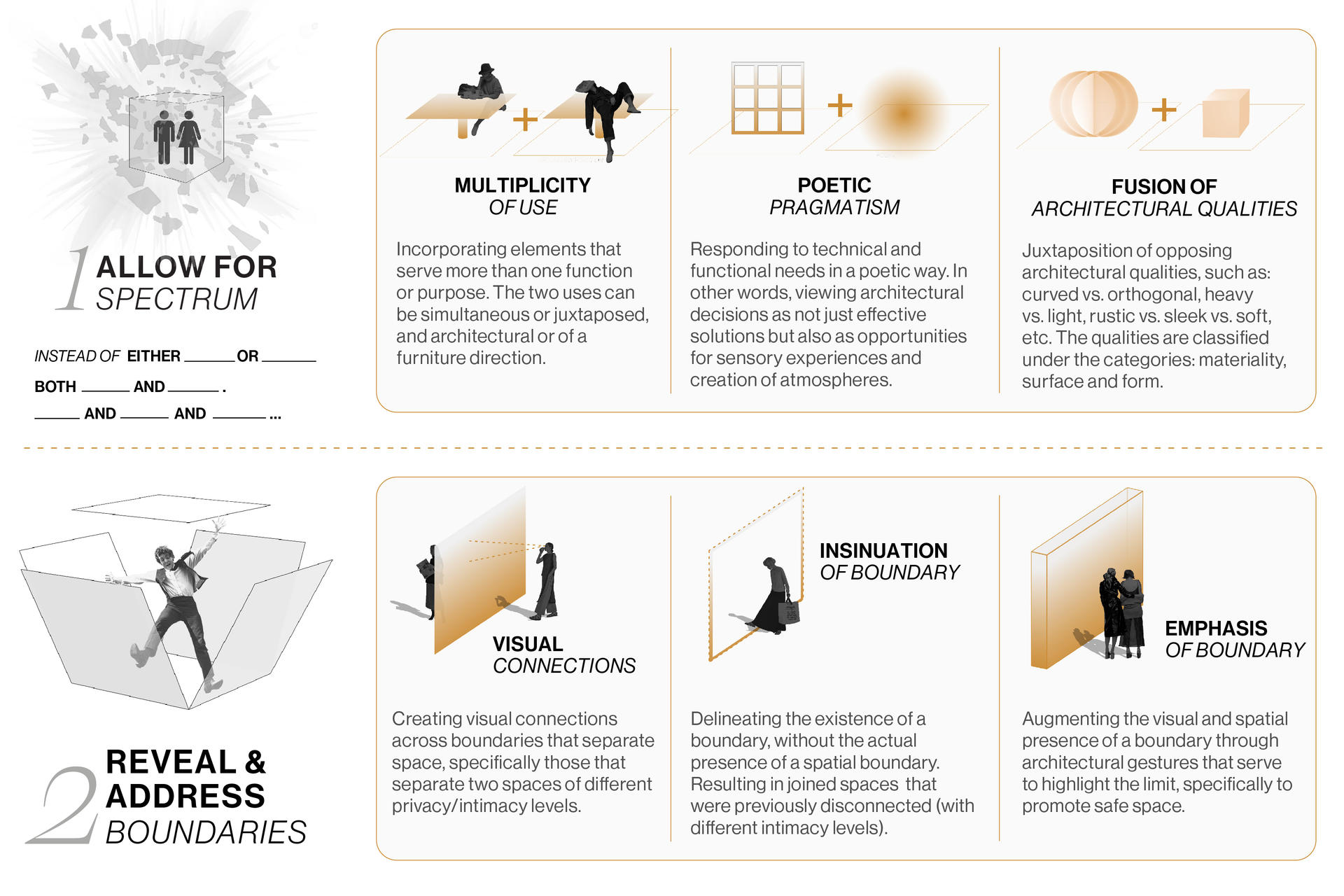
Design Guidelines 1 & 2
Allow For Spectrum: Binary labels and rigidity restrict the fluidity of human nature; wider spectrums lead to more comfortable expressions of selfhood. Challenging binaries, one-directionality, and stagnancy, can be translated into spatial form to result in bolder spaces with more character and sensorial interest.
Reveal & Address Boundaries: The dichotomy between public and private is an essential part of the queer space discourse; theorists and architects have celebrated blurring the normative boundary (intangible and spatial) that has been set between the two. Boundaries are also important for non-normative users in providing for their need to retract to certain spaces to express one’s full self. Ergo, addressing boundaries, whether to challenge or enforce them — to allow for openness or for safety — is essential to the design strategies in this catalog.
Image
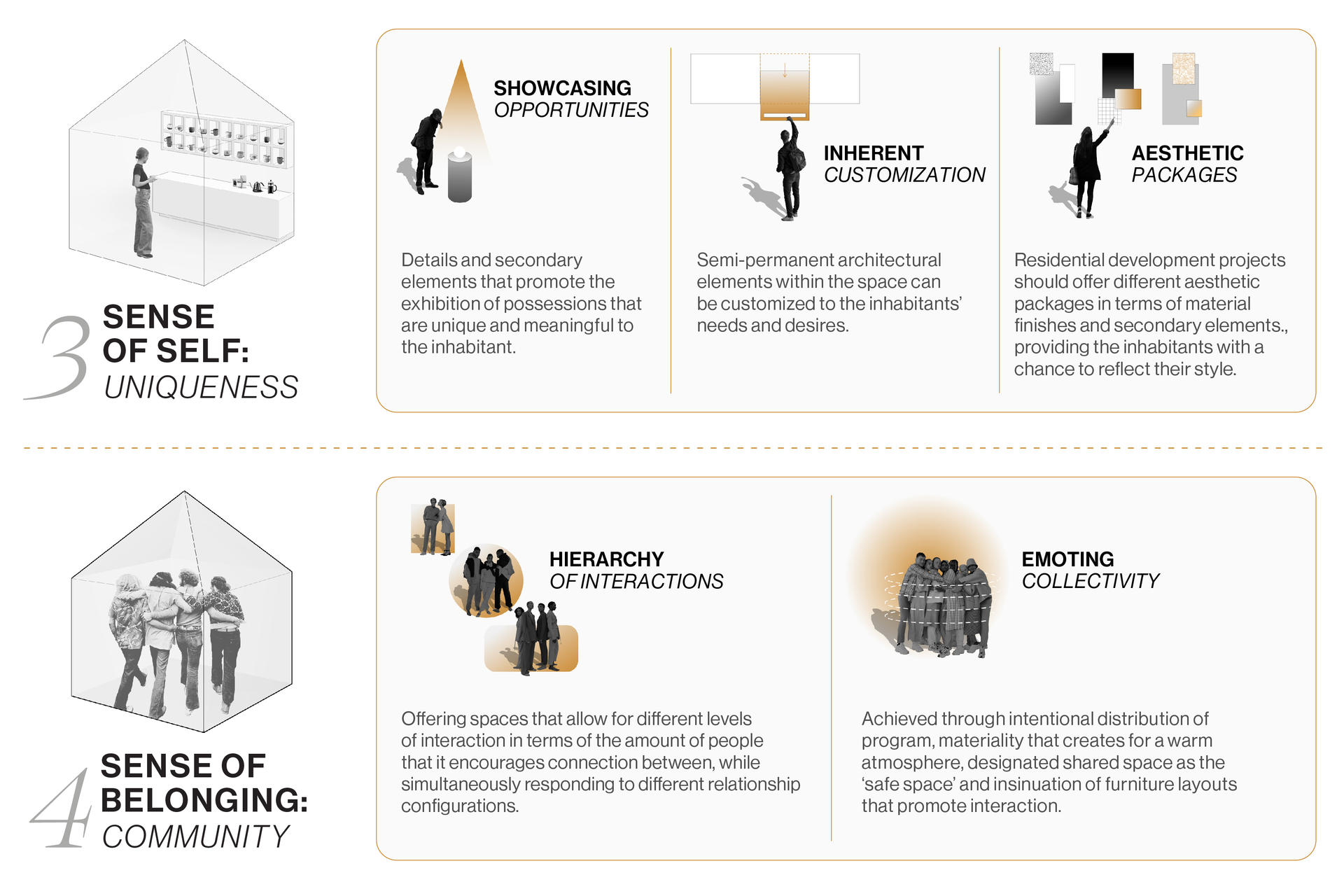
Design Guidelines 3 & 4
Sense of Self: How we find and arrange furniture to fit our needs, how we distribute and display our possessions, how we interact with the aesthetics of our residence, and other practices of personalizing domestic space are essential to finding comfort and safety in our homes. These strategies counteract the lack of character often found in apartments of new residential development projects. The strategies result in spaces that promote homemaking, inviting the inhabitants’ individuality to be manifested.
Sense of Belonging: Designing for different types of relationships, between different numbers of inhabitants, that happen on different levels of intimacy, is an essential component of responding to queer domesticities. These strategies explore how residential design can respond to different configurations of relationships that have rarely been considered in the field. Simultaneously, this guideline also considers how interior architecture and design can enhance the feeling of comfort and belonging in shared domestic spaces.
Image
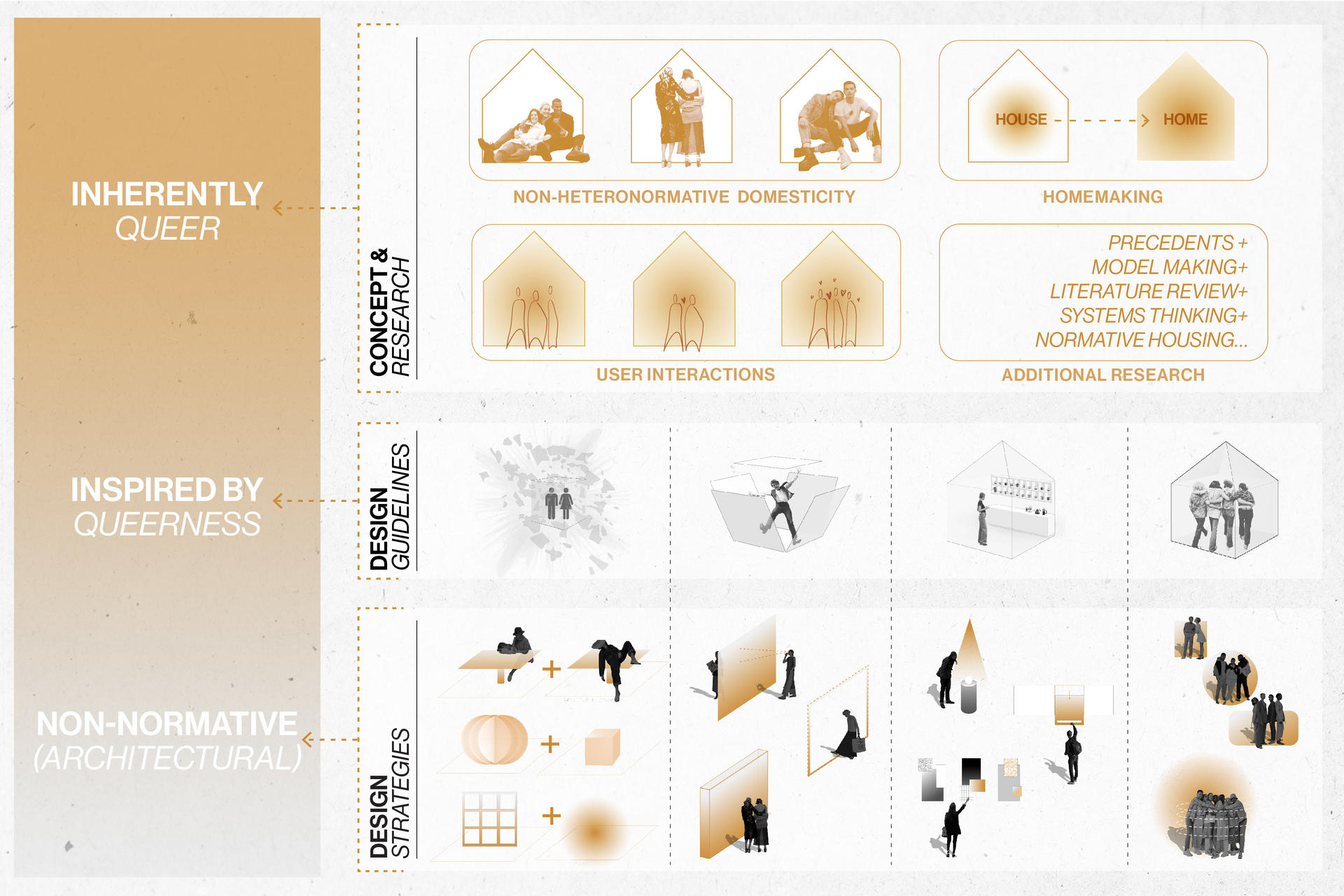
Catalog of Design Strategies: Elements
Understanding the parts and their connections
The conceptualization process of the project incorporates three methods of analysis: understanding precedents, drawing on architectural queer space theory, and interacting with representatives of the queer community. The research leads to a design catalog that simultaneously provides new strategies to expand the residential design field and identifies current ones that directly cater to needs and habits of non-heteronormative domesticities. This will encourage professionals in the residential design field to acknowledge overlooked domesticities. Moreover, the catalog of design strategies is permeable; it will not only cater to the domesticities observed, but also generally provide more typology variance and homemaking opportunities.
Assigning the quality of queerness to space is an ambiguous process; the catalog does not exemplify queer design strategies nor does it show queer space. The research process was focused around the queer community, and the design guidelines are inspired by said research. However, architecture itself can not be queer.
